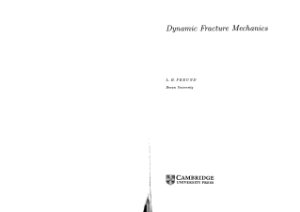© Cambridge University Press. 1998. 563 P.
Published by the press syndicate of the university of Cambridge
This book is in copyright. Subject to statutory exception and to tlie provisions of relevant collective licensing agreements, no reproduction of any part may take place without the written permission of Cambridge University Press.
First published 1989 First paperback edition 1998
Printed in the United States of America
Library of Congress Cataloging-in-Publication Data is available.
A catalog record for this book is available from the British Library.
ISBN 0-521-30330-3 hardback ISBN 0-521-62922-5 paperback
This book is an outgrowth of my involvement in the field of dynamic fracture mechanics over a period of nearly twenty years. This sub-branch of fracture mechanics has been wonderfully rich in scope and diversity, attracting the attention of both researchers and practitioners with backgrounds in the mechanics of solids, applied mathematics, structural engineering, materials science, and earth science. A wide range of analytical, experimental, and computational methods have been brought to bear on the area. Overall, the field of dynamic fracture is highly interdisciplinary, it provides a wealth of challenging fundamental issues for study, and new results have the potential for immediate practical application. In my view, this combination of characteristics accounts for its continued vitality.
Published by the press syndicate of the university of Cambridge
This book is in copyright. Subject to statutory exception and to tlie provisions of relevant collective licensing agreements, no reproduction of any part may take place without the written permission of Cambridge University Press.
First published 1989 First paperback edition 1998
Printed in the United States of America
Library of Congress Cataloging-in-Publication Data is available.
A catalog record for this book is available from the British Library.
ISBN 0-521-30330-3 hardback ISBN 0-521-62922-5 paperback
This book is an outgrowth of my involvement in the field of dynamic fracture mechanics over a period of nearly twenty years. This sub-branch of fracture mechanics has been wonderfully rich in scope and diversity, attracting the attention of both researchers and practitioners with backgrounds in the mechanics of solids, applied mathematics, structural engineering, materials science, and earth science. A wide range of analytical, experimental, and computational methods have been brought to bear on the area. Overall, the field of dynamic fracture is highly interdisciplinary, it provides a wealth of challenging fundamental issues for study, and new results have the potential for immediate practical application. In my view, this combination of characteristics accounts for its continued vitality.

